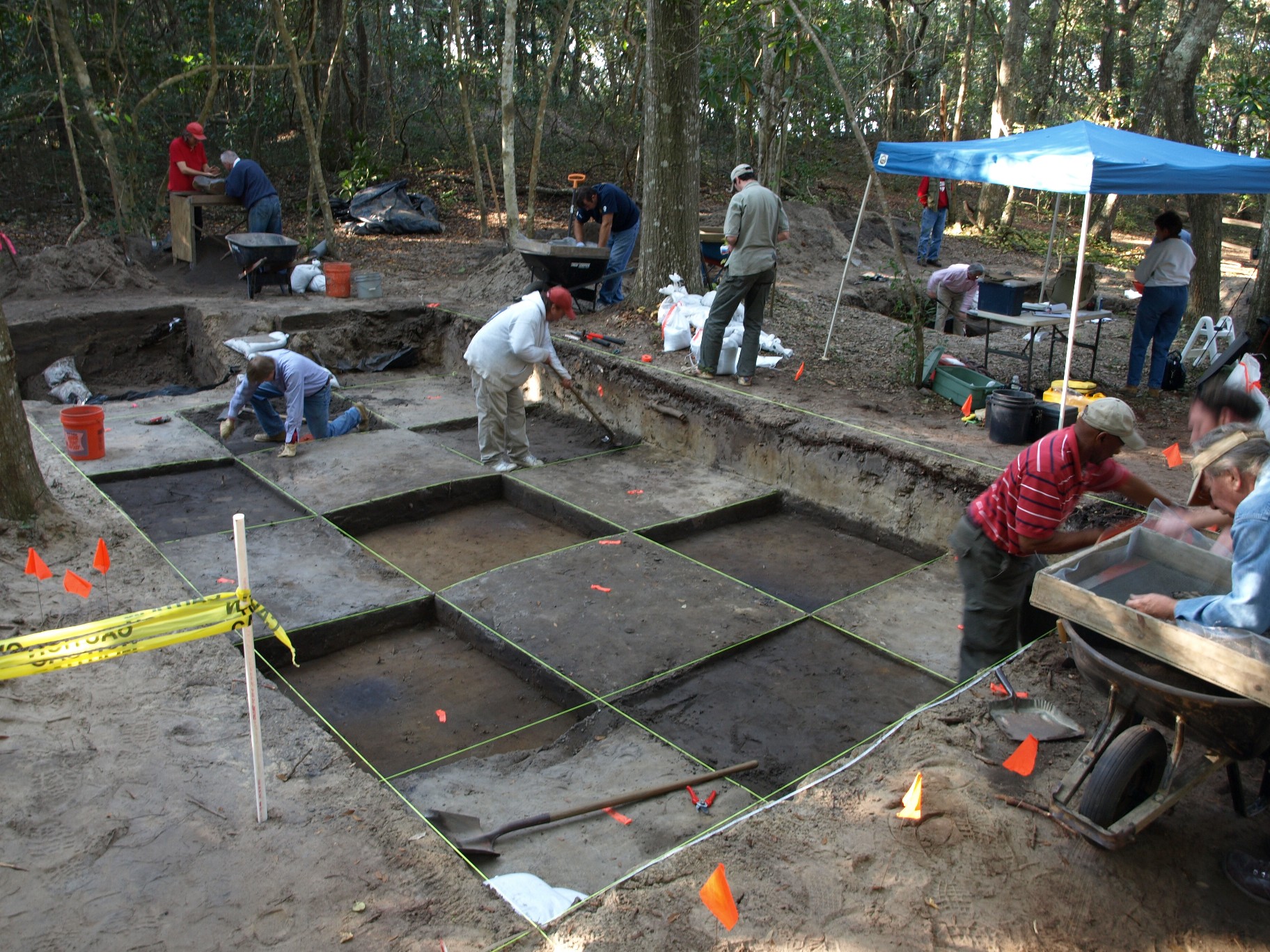-
Spring 2010
Volume60Issue1
Over the past 50 years, archaeological digs at the Fort Raleigh National Historic Site on Roanoke Island have failed to turn up evidence of the palisades of the English fort of 1585 or the building of the lost colonists’ settlement of 1587. This led some experts to conclude that coastal erosion had washed the remains away long ago. New discoveries in 2008 and 2009, however, suggest that significant vestiges of the fort and settlement may indeed survive.
See "Roanoke’s Lost Colony Found?" in this issue
Excavations headed by archaeologists Eric Klingelhofer, history professor at Mercer University, and Nicholas Luccketti, of the James River Institute for Archaeology, have concentrated recent efforts on a wooded area, covered with sand deposits and dunes, close to the 100-foot-wide earthwork known as Fort Raleigh. Digging beneath the topsoil and several feet of sand, the team exposed the surface of the 16th-century ground and discovered fragments of 16th-century Indian and European pots, an Indian bone bead, a “Carolina blue” glass bead, pieces of a ceramic flask, and Spanish olive jar shards. Excavations also recovered two nearly complete tobacco pipes and several pipe stems resembling that shown in a 1590 engraving of an Indian man and woman seated on a mat eating a meal.

Nearby, amid numerous Venetian glass beads (objects frequently traded between early European explorers and Indians), the archaeologists unearthed two copper aglets, tiny decorative sheaths used to cap the tips of laces in Elizabethan clothing. Just a few feet away in a shallow pit, the team made its most stunning discovery: a complete necklace of 13 diamond-shaped copper plates. Short, knotted cords once held the one-inch plates together but had rotted away. Laboratory testing revealed that the copper originated from continental Europe, which suggests that English colonists brought this high-status ornament over in 1585 or 1587 as a gift for a local Indian chief or his spouse.
This proximity of European and Indian artifacts provides new evidence about how the English colonists and Indians shared life on the Outer Banks. Similar archaeological evidence of interaction between the English and Indians has also been found recently at Jamestown’s early 17th-century fort. “This suggests a need to reassess the history of England’s earliest American colonies,” says Klingelhofer, “so as not to overlook the importance of initial periods of peaceful coexistence between the two peoples that were later overshadowed by the tragic consequences of war.”
For more information, see "First Colony Foundation Archaeologists and NPS Conclude Successful Dig at Fort Raleigh National Historic Site on Roanoke Island"

